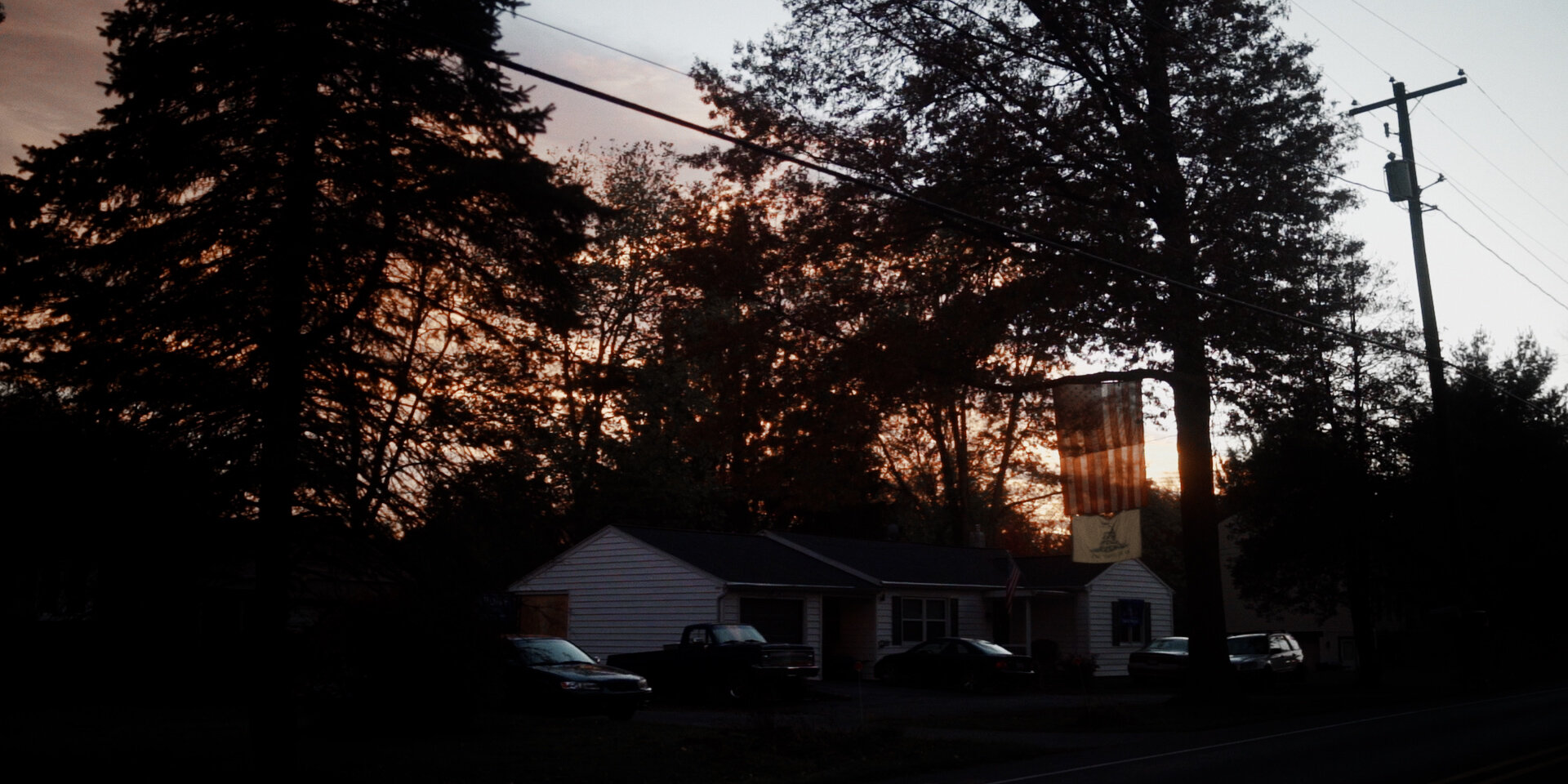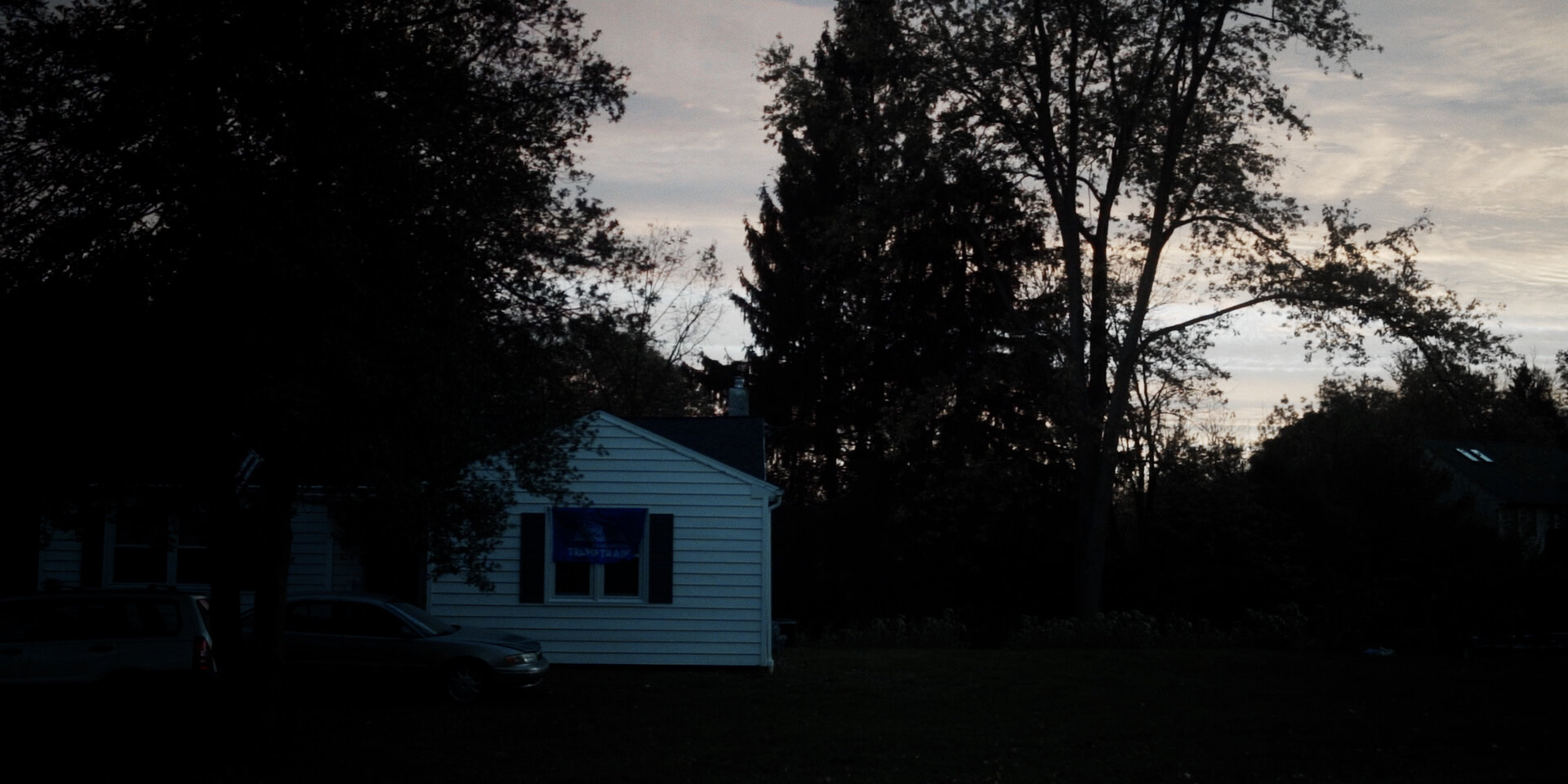"WE THE PEOPLE" Election Day Mini Doc
In 2020 on Election Day I set up a phone line where others could call and leave voicemails about how they felt regarding the election. Even across a small sample of voices it captured the sense of uncertainty and divide many of us were feeling.
Project Title:
WE THE PEOPLE
by Jordan K. Graff
2020 was simultaneously an American election year and the beginning of the COVID-19 pandemic. It felt like no matter which way the election went it would be historic.
A home with an American flag, a “Don’t Tread on Me” Flag, and a “Trump Train” Flag
concept
I wanted to see if I could create a short documentary film that captured the general feelings people were experiences surrounding the election. The hope was to create a time capsule to reflect back the emotions of the 2020 election.
challenges
There were a handful of things that made documenting the day a challenge. The most universal being the ongoing pandemic. And like many Americans I also had to work during the election. So if I was going to do it I needed to find a way to do it both safely and efficiently.
What I landed on was to set up a phone line that people could call into and leave voicemails. This would let me passively collect perspectives from a variety of people without having to conduct in-person interviews. The audio submissions could then be used as the backbone of the film.
process
On November 3rd I woke up and posted the number across a few social media accounts prompting people to call it and leave their thoughts and feelings about the 2020 elections.
I hopped in my car and pulled up some directions. I had a shoot that morning that was only a few minutes away and since I got up at my normal time I had some time to kill before I was suppose to arrive. So I drove towards my final destination but stopped along the way to film public displays of support for each candidate.
After my shoot I drove to our downtown office again pulling over to capture more footage as I came across things that caught my eye. At the end of the work day I did the same on my way home.
While filming I became very aware of how easy it was to find stuff for the Trump campaign but not the Biden campaign. I really wanted to have a balance of images but I was filming in a mostly conservative area. It also came to mind that there was just merchandise built around Trump in a way that didn’t exist the same for Biden. Trump supporters had a variety of flags to choose from to show their support while the closest flag I could find for Biden was a “Vote Blue” flag.
A home with a “Vote Blue“ flag over it’s driveway
Typically when making a documentary a lot ends up on the cutting room floor. That however was not the case here. A shooting ratio is the amount of raw footage shot to the runtime of the final runtime. Documentaries tend to have high shooting ratios since the story is often shaped in the edit. 100:1 isn’t unreasonable at all.
We The People’s runtime was just shy of 7 minutes and I only captured 8 minutes and 42 seconds total. Early on I decided to shoot at 120 fps, which meant all the footage was slow motion and could be played back at 20%. This turned my 8 or so minutes into roughly 42 and a half minutes making it possible to achieve that kind of runtime.
This also gives the final doc a slow visual pace, almost like moving photos. While this wouldn’t work in many situations in this case it visuals to become the backdrop for the audio messages.
A home with a variety of republican candidate yard signs and a “Jesus 2020” yard sign
The audio submissions were a different story. In total I had about 20 minutes of raw audio recordings, with the shortest submission being 16 seconds and the longest being nearly 6 minutes, from roughly a dozen different people. Despite a small sample of people they still had a variety of perspectives.






